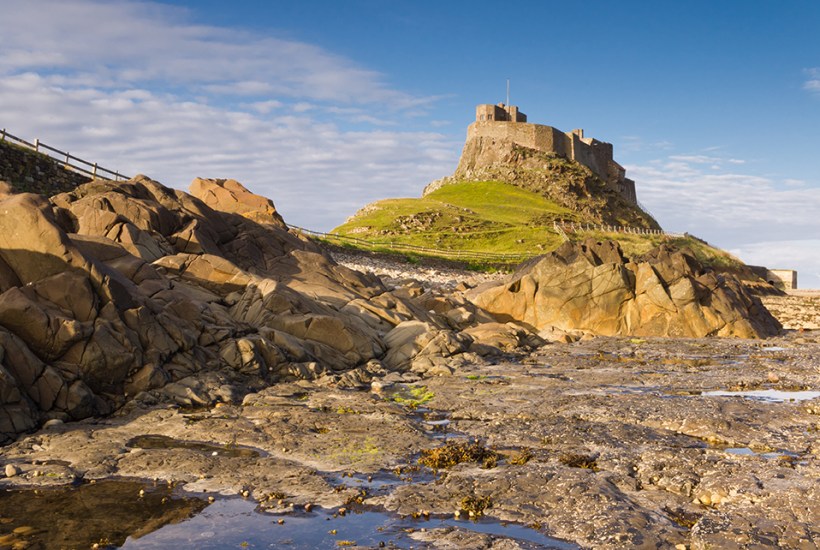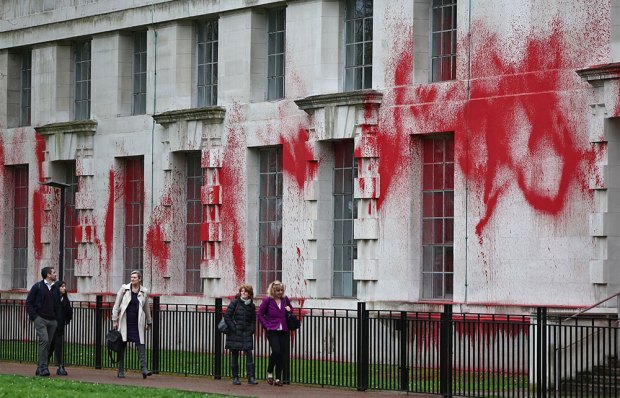It’s hard to explain how sad it will be if, after Christmas, Defra officials ban fishing on Holy Island, also known as Lindisfarne, in the North Sea, where the gospels were first translated and where men and women have fished for hundreds if not thousands of years.
For some reason no one can quite work out, Holy Island has been placed on the shortlist to become a Highly Protected Marine Area – HPMA – in which no fishing of any sort is allowed. But banning all fishing will destroy the village; Lindisfarne, which has been inhabited since long before its most famous residents, St Aidan and St Cuthbert, set up there, will fade away. There’ll be tourists, but no actual community, no life. Even the Vikings didn’t manage that.
I imagine future historians hunting through Defra records looking for the great explanation; the reason officials thought Holy Island was a necessary sacrifice. The saddest thing of all is that I don’t think there is one. I’ve read the Defra consultation ‘factsheet’ and I’m afraid there’s not much evidence of thought: just a vague impression of apathetic officials spending a few hours on Google over a Pret salad at lunchtime, picking feasible places for their HPMA candidates list – remote, northern, less likely to make a fuss.
The ‘factsheet’ says an HPMA on Holy Island would be ‘designed to achieve full natural recovery… of the biological communities present’. Perhaps they thought this an unarguable good. If they’d only Googled a little further, or visited, they’d have discovered that fishing on Holy Island is already about as ethical as any eco-Tory could hope for. There are only a handful of fishermen, and because the island is already in a protected zone all they catch is lobster and crab – carefully returning any hen lobsters ‘berried’ with eggs. Not a single biological community is going to recover quicker because the fishermen are banned. If Defra was really into levelling up, focusing on the north, they’d hold up the Holy Island fishermen as an example to the south.
‘Local knowledge suggests that trawling for lobster may take place,’ says the Defra report darkly. A much better, longer report from the Inshore Fisheries and Conservation Authority makes quite clear that it does not, and anyway there are already conservation bylaws in place that ban trawling and dredging in the whole North Northumberland and Berwickshire Special Area of Conservation.
Well then, says the report, ‘a small number of beach trout netting stations are thought to be in place off Goswick’. That’s the reason to casually put paid to thousands of years of history? A small number of possible beach trout? It sounds like the dying line of a sad poem.
And what about the humans: don’t they count as a ‘biological community’ too? Holy Island is a tidal island, inaccessible when the sea surges in and surrounds it. If the fishermen are banned from catching lobster and crab, they’ll have to leave altogether, and this is why an HPMA would be lethal to Lindisfarne. There’s no other island-based job the fishermen can do. How can you have a normal job when at irregular times throughout the day and night a mile of icy sea appears between you and your work? And if the fishermen leave, their families go too: their wives who work in the pubs and hotels, their children who go to the island school.
My brother and I grew up in Northumberland, on the mainland just south of Holy Island, and like all coastal children, our minds were full of wrecks, smugglers and rescues at sea: Grace Darling, the lighthouse-keeper’s daughter who in 1838 rowed out at night with her father to rescue the crew of the Forfarshire; the men of the Holy Island coastguard who saved the crew of the Sea Belle in 1899 by shooting ropes from rockets.
The fishermen of Holy Island are the inheritors of that tradition. They double up as coastguards – not just for the 160 or so residents but for the hundreds of thousands of tourists who arrive in the summer. Every year, inevitably, a few ignore the safe crossing times on the causeway and the sucking current pulls their cars out to sea. Last year the Holy Island Coastguard Rescue Service responded to 45 emergency call-outs. How does Defra plan to replace them? How will it ensure that elderly residents have access to medical care at high tide when the fishermen, the trained first-aiders, have left?
I badgered Defra for a response this week, and received a stock reply: ‘Lindisfarne is being considered as an HPMA because of its incredible biodiversity. As part of our consultation we have listened to the views of the local community, fishermen, environmental groups and others.’ If they had really listened to the fishermen, perhaps the fishermen wouldn’t have been so surprised that an HPMA is in the offing. ‘I only found out about it from a piece in the Guardian online,’ says Richard Ward. ‘I had no idea this was even being thought about. It was just a complete smack in the face. Every time I talk about it, I get a knot in my stomach. What am I going to do? I can’t invest in my boats, we can’t make any plans for the future.’
I have a knot in my stomach too, and an awful vision of the future, of Holy Island becoming just another theme park owned and presided over by a series of charities and quangos. I can see it clearly. There’ll be lottery money for a museum of fishing, where children can learn about the vibrant maritime traditions that once flourished there; perhaps a sensory exhibit where they can press buttons to release the aroma of smoked herring; a tasteful sculpture made from lobster pots.
Before the Vikings arrived, according to the Anglo-Saxon Chronicle there were ‘dreadful forewarnings over the land of Northumbria, which woefully terrified the people: these were amazing sheets of lightning and whirlwinds, and fiery dragons were seen flying in the sky. Shortly after in the same year, on the sixth day before the ides of January, the woeful inroads of heathen men destroyed God’s church in Lindisfarne island by fierce robbery and slaughter’. The sixth day before the ides of January is 7 January, around the time I expect the woeful inroads of Defra will be making their decision. Say a Christmas prayer that history doesn’t repeat itself.
The post The greatest threat to Holy Island since the Vikings appeared first on The Spectator.
Got something to add? Join the discussion and comment below.
Get 10 issues for just $10
Subscribe to The Spectator Australia today for the next 10 magazine issues, plus full online access, for just $10.
You might disagree with half of it, but you’ll enjoy reading all of it. Try your first month for free, then just $2 a week for the remainder of your first year.















Comments
Don't miss out
Join the conversation with other Spectator Australia readers. Subscribe to leave a comment.
SUBSCRIBEAlready a subscriber? Log in